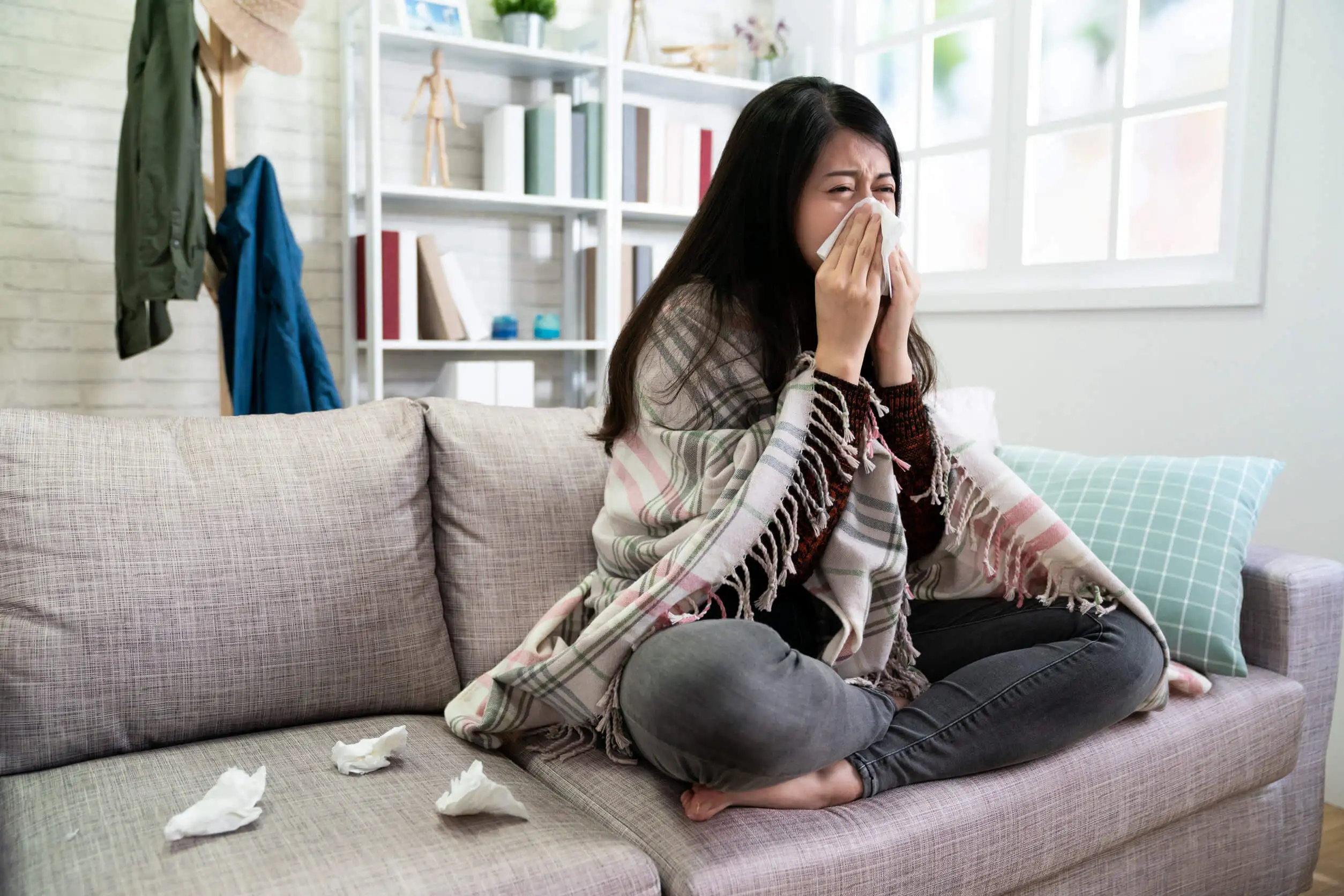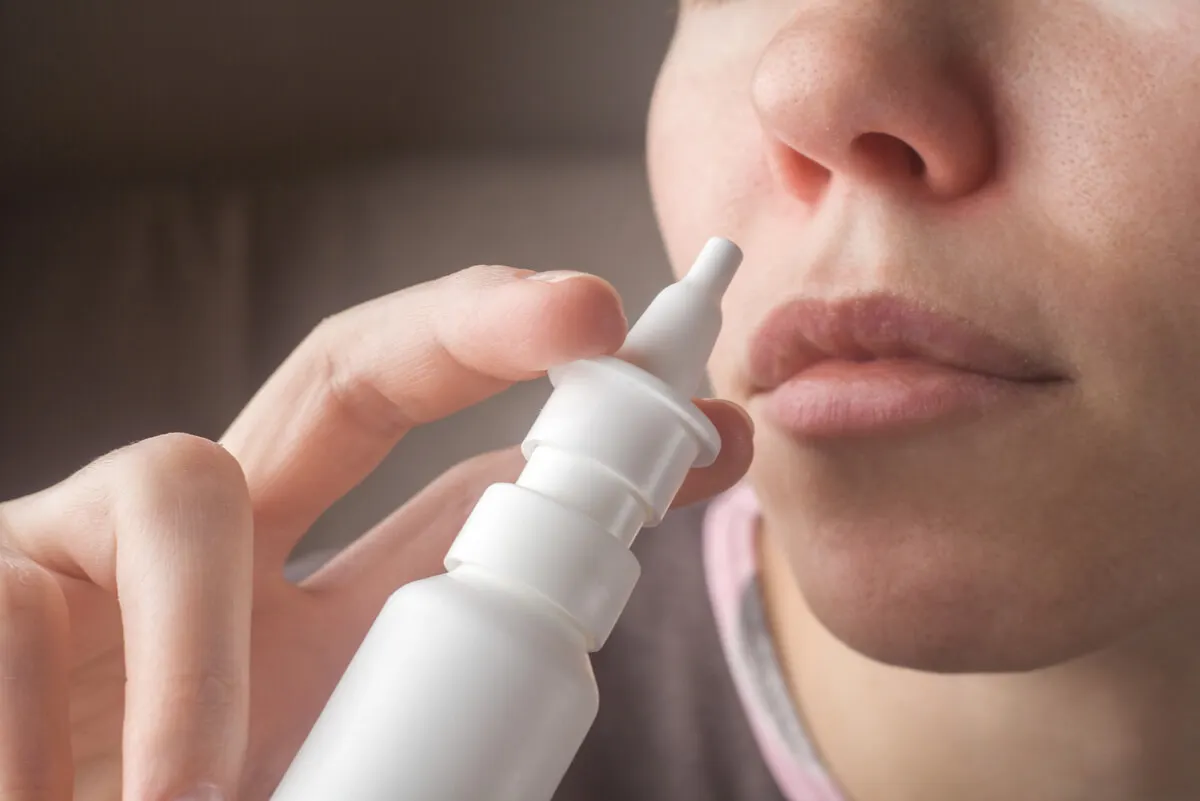Non-Allergic Rhinitis: Causes, Treatment and Prevention


Reviewed and approved by the nurse Leidy Mora Molina
Rhinitis is nothing more than inflammation of the nasal mucosa. Although most cases are caused by allergens, there is also non-allergic rhinitis. Do you want to know about its treatment and prevention? Keep reading!
Another name for non-allergic rhinitis is the common cold, since its main cause is a viral infection. However, the condition can also be due to contact with environmental irritants, so it’s important to identify its origin before starting treatment.
Symptoms
The symptoms of this type of rhinitis are characterized by appearing several times throughout the year. The main manifestations of non-allergic rhinitis are sneezing and watery nasal discharge.
Other symptoms may also occur, such as the following:
- Wheezing
- Runny nose
- Nasal congestion
- Loss of smell
- Slight fever
Possible complications
A study published in the journal Clinical and Experimental Allergy showed that non-allergic rhinitis is a predisposing factor for developing asthma. Some people may also have difficulty breathing, which motivates them to consult a doctor as soon as possible.
Other possible complications that may occur in people with non-allergic rhinitis are the following:
- Sinusitis
- Chronic rhinitis
- Nasal polyps
- Total interruption of daily activities

Causes of non-allergic rhinitis
One of the main causes is viral infections, especially in acute cases. Symptoms are also often associated with agents that irritate the nose.
Although the specific causative agent is unknown in most cases, some people have associated the symptoms of non-allergic rhinitis with irritants. These irritants don’t cause an allergy cascade in the body, but only promote a local reaction in the nose:
- Dust
- Strong odors of some perfumes
- A dry atmosphere and other climatic changes
- Tobacco smoke or other pollutants
- Spicy foods
Non-allergic rhinitis is also associated with the hormonal changes of pregnancy and menstruation. And some medications are capable of triggering these symptoms:
- Nasal decongestants
- Oral contraceptives
- Beta-blockers, such as propanolol
- Nonsteroidal anti-inflammatory drugs, such as ibuprofen or aspirin
- Angiotensin-converting enzyme inhibitors, such as captopril
Diagnosis
Diagnosis of non-allergic rhinitis is made through a physical examination in most cases. The physician will ask about symptoms, when they occur, and possible triggers. The information provided should be accurate to make the task easier.
Other questions may be related to the home or work environment, with an eye toward identifying the trigger. The physician should also check the nostrils for mucosal inflammation and discharge.
Additional tests aren’t usually necessary. However, the specialist may perform a skin test to rule out allergies. Some blood tests, such as allergen tests, also help to rule out other etiologies.
Treatment of non-allergic rhinitis
There’s no specific treatment for non-allergic rhinitis.
Medical treatment will be aimed at relieving symptoms. Nasal decongestants offer immediate relief, however, overuse may worsen the situation.
Antihistamines are also a good treatment choice. These medications can relieve inflammation, but some dry out the mucosa more, so it’s necessary to consult with the specialist.
Antibiotics aren’t usually necessary in the treatment of non-allergic rhinitis. The only indication would be the presence of an over-aggregated bacterial infection. To identify this complication, a culture will be necessary.
A recent study revealed that the use of intranasal corticosteroids relieves the symptoms of the condition in the first 4 weeks. However, the long-term effects are uncertain and may cause adverse effects.
Read more here: The Relationship Between Asthma and Rhinitis
Prevention
There’s no 100% effective measure to prevent the onset of non-allergic rhinitis. What is possible is to decrease the probability of occurrence. The condition is related to various triggers, so avoiding exposure to these particles seems to be the best recommendation.
Another tip to reduce the probability of suffering from this rhinitis is not to abuse nasal decongestants. Eliminating tobacco and excessive alcohol intake are also effective measures to control the disease.
People who comply with their treatment are less likely to develop symptoms again. Therefore, it’s important to follow all the specialist’s recommendations and apply the treatment for the recommended time.

When to see a doctor?
Difficulty in breathing is one of the warning signs that motivate medical consultation. However, there are other manifestations that indicate the presence of a complication, among which the following stand out:
- Severe symptoms with several weeks of evolution
- The presence of high fever and purulent nasal discharge
- Symptoms that persist despite medical treatment
- Annoying side effects from over-the-counter medications taken
A common disease with multiple causes
Non-allergic rhinitis is a very common disease affecting millions of young adults. The disease isn’t a serious condition, but it can become uncomfortable for people during their daily activities.
The best option is to identify and eliminate the triggering agent to try to prevent symptoms. Consultation with a specialist is also necessary to rule out a possible allergy and initiate appropriate treatment.
All cited sources were thoroughly reviewed by our team to ensure their quality, reliability, currency, and validity. The bibliography of this article was considered reliable and of academic or scientific accuracy.
- Eifan AO, Durham SR. Pathogenesis of rhinitis. Clin Exp Allergy. 2016 Sep;46(9):1139-51.
- Scadding GK, Kariyawasam HH, Scadding G, Mirakian R et al. BSACI guideline for the diagnosis and management of allergic and non-allergic rhinitis (Revised Edition 2017; First edition 2007). Clin Exp Allergy. 2017 Jul;47(7):856-889.
- Segboer C, Gevorgyan A, Avdeeva K, Chusakul S et al. Intranasal corticosteroids for non-allergic rhinitis. Cochrane Database Syst Rev. 2019 Nov 2;2019(11):CD010592.
- Hellings PW, Klimek L, Cingi C, Agache I et al. Non-allergic rhinitis: Position paper of the European Academy of Allergy and Clinical Immunology. Allergy. 2017 Nov;72(11):1657-1665.
- Meng Y, Wang C, Zhang L. Diagnosis and treatment of non-allergic rhinitis: focus on immunologic mechanisms. Expert Rev Clin Immunol. 2021 Jan;17(1):51-62.
- Eckrich J, Hinkel J, Fischl A, Herrmann E et al. Nasal IgE in subjects with allergic and non-allergic rhinitis. World Allergy Organ J. 2020 Jun 23;13(6):100129.
This text is provided for informational purposes only and does not replace consultation with a professional. If in doubt, consult your specialist.








